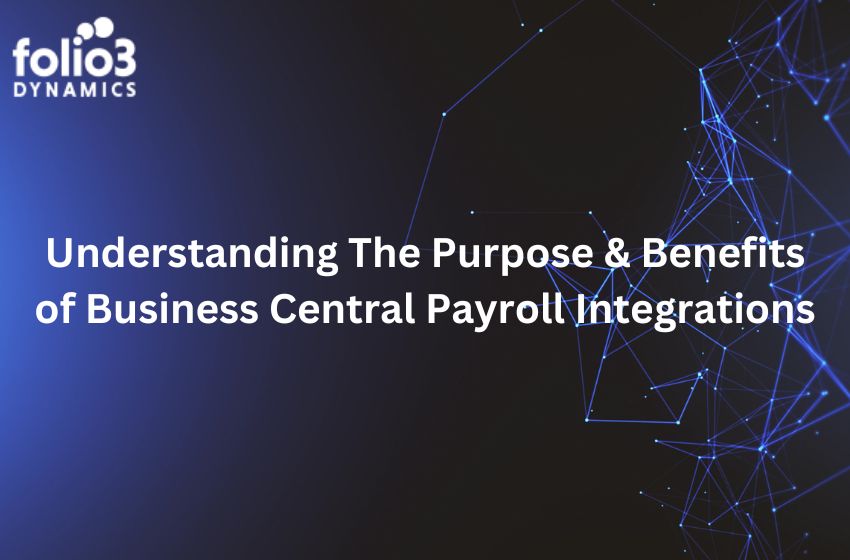Businesses are flourishing all around the globe, but the competition keeps spiking up. Any company looking to sustain and grow needs to implement advanced systems that can streamline business processes and functions to achieve better business outcomes. However, these benefits can only be attained if you choose the right ERP system, and Baan ERP is one of the best ones. So, if you are a tech mogul and want to know about the Baan system, we have got all the information for you!
Baan ERP vs. Folio3
When it comes to implementing Baan ERP, you need a reliable and experienced systems integration agency that got the expertise and skills to ensure seamless ERP integration with existing business infrastructure. Folio3 is the world’s leading tech consultancy agency working with businesses of all sizes and across industries to help automate their processes and achieve greater efficiency with robust ERP implementation services. Get in touch with our sales expert for all queries and concerns.
What Is The Baan System?
- The Historical Background
Baan System was created by Baan Corporation which was launched by Jan Baan back in 1978. The company started in the Netherlands and were aimed at offering administrative and financial consulting service. They designed their first software package in the form of an ERP system (the system was created with the help of his brother, Paul Baan). Their first computer program was designed in basic language on Durango F-85 computer.
Fast forward to the 1980s; the corporation started to develop the applications on Unix computers which had Baan-C and C language (the syntax was just like the basic language). Truth be told, Baan gained popularity back in the early 90s, and they gained popularity for the high-tech infrastructure 4GL language and DEM (dynamic enterprise modeler). Also, the Baan 4GL is still one of the most productive and effective app development platforms with database configuration.
Back in 1994, Baan won the Boeing deal, which made them a threat to SAP, which was the market leader at that time. Baan also went IPO back in 1995 and gained the public listed company entity in NASDAQ and Amsterdam. In addition, the consulting firms were implementing Baan IV for multinational businesses and also acquired various software firms, such as Caps Logistics, Aurum, Coda, and Berclain, which helped them gain a 91% sales growth rate.
However, Baan struggled with finances when their stock prices lowered in 1998. Even more, the company struggled with adverse reports, financial issues, and lawsuits which lead to the company’s sale to Invensys for $700 million. However, they also sold Baan to SSA Global Tech in 2003 for around $135 million. Later in 2005, SSA renamed Baan to SSA ERP, which was again sold to Infor, the ERP consolidator company.
- Baan ERP
This ERP system runs on Windows, AS/400, and Unix systems and has various modules. The modules are designed for management, distribution, finances, manufacturing, and project estimation. At the core, the system was designed to offer administrative services as well as record keeping. Baan also has the modular software suite, which has multiple small programs to meet the individual needs of the companies, as we have already mentioned.
As far as the features are concerned, they vary with every version, and the company also offered to customize the system to meet the clients’ unique needs. However, their overall popularity was based on Baan ERP software which was an off-the-shelf solution. With Baan ERP, the setup can be implemented on multiple servers as well as centrally. With the application of Baan ERP, operating system, and database, the users can create multi-company infrastructure.
There are various modules available in the menu, such as manufacturing, projects, finance, constraint planning, utilities, distribution, tools, and transportation. When you implement Baan ERP, technical and functional parameters are available that help set up the applications. With the tool module, the users can manage the database, customize the programs, and write reports along with taking the backup.
Pros
- Easy to use
- Easy to implement
- High-end supply chain and manufacturing modules
- Integrated with localization
Cons
- Complicated functionality
- Ineffective web operations
Baan ERP Vs. SAP
When talking about ERPs, it’s hard not to talk about SAP because it’s one of the most popular ERP systems. Even more, SAP was the direct competitor of Baan ERP, so a proper comparison will help outline the details, such as;
- Both these ERP systems offer the same financial functions and features.
- The level of human resource support is the same.
- Both Baan ERP and SAP deliver comparable features in the manufacturing management module.
- The features and functionalities of purchasing, inventory, sales, and quality management are similar.
- SAP takes the lead in the category of product technology when compared to Baan ERP
According to this point, it’s pretty evident that SAP wins by a tight margin, but this comparison is only made while considering the functionality. Since we have already talked about Baan ERP and its features, it’s best to read about SAP ERP if you want to gain proper insights.
SAP ERP has been around since 2006 and is known for wide-scale applications. It uses HANA as the database, which eventually helps save money. In addition, SAP has implemented NetWeaver, which is a fantastic tool for transferring and sharing between non-SAP and SAP systems. This tool will optimize data management for mobile clients. However, they aren’t cloud-first solutions, so it’s best to use them as the on-premise solution because it will take them to establish a seamless cloud infrastructure.
The Bottom Line
Baan remained a robust ERP system, which at one time even competed with SAP (one of the leading ERP systems today) closely. It’s an easy-to-use system that is especially suited to meet the unique need of supply chain and manufacturing industries. Also, with an easy interface and shorter learning curve, it definitely is a worthy choice to explore for manufacturing and supply chain industries.









